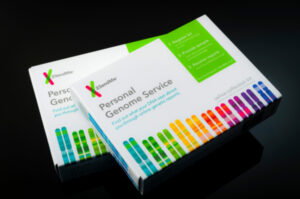As an IT leader, you know that technology is the lifeblood of a successful organization. However, you also understand that a certain level of technical proficiency must be achieved outside of your immediate team for that same technology to be effective. Most jobs throughout an enterprise now require some degree of digital aptitude, even though they may not be inherently tech-related. Digital literacy is non-negotiable and teamwork is key in achieving it enterprise-wide.
The right tools with the right training can create a whole that is greater than the sum of its parts. Through collaborative efforts, you can be a driving force to improve digital proficiency across the board – and continue to show value and positively impact the bottom line.
When developing your strategy in this regard, consider the following:
Stay High-Level
Though it may seem counterintuitive, in-depth explanations of a specific technology are probably not in your business’s best interest. The aim of digital literacy is to boost the overall technical competence of the workforce— this cannot be achieved if too much time, energy, and resources are poured into the mastery of a single practice.
Instead of focusing efforts on one initiative, figure out how you can increase aptitude across the board. Take some time to determine your business’ most pressing needs. Where is your company’s digital literacy falling short? What skills-teaching would have the most impact today, this week, or even this year? Prioritize as best you can.
Pick three to five of these shortcomings in digital literacy and make a point to mitigate them. If possible, establish a timeframe to make sure everyone can achieve a certain competence by a given date.
Remain Data-Driven
Not sure what technical instruction your enterprise could benefit from the most? Ask.
Go out of your way to figure out major pain points and plan your strategy accordingly. This doesn’t have to be a time-consuming process— a brief, well-designed survey may be all that it takes. Or a conversation over lunch with a colleague from the business at the very least.
Once you have identified the pain points, create your competency strategy accordingly. Run a seminar, design a refresher course, or encourage your team to mentor others on a one-on-one basis. You know your company, and it’s up to you can use that knowledge to develop initiatives that would be most effective and well-received.
Make Things Multimodal
Each of us processes and learns information differently, and something that’s second nature to one individual might be challenging for another. When educating business leaders and other employees about a new technology or improvement, abandon a one-size-fits-all approach.
Do what you can to make your instruction accessible for different learning types. Explain the process or practice verbally. Draw diagrams. Provide demonstrations. Encourage questions and provide thorough answers. Providing options catered to tactile learners as well as visual or auditory styles will often increase success rates significantly. Consider these factors when developing learning modules to maximize effectiveness.

Focus On Value
Regardless of whether you are unveiling a new application, integration, or system or making minor tweaks to an existing component— there will always be at least a handful of users who refuse to embrace the shift. Though this can be frustrating, don’t attribute it to outright non-cooperation. Change can often be viewed as a threat through certain viewpoints and may just be part of human nature for many.
Do more than show users how to use a specific technology. Explain why they’ll want to. Maybe this new application will maximize organizational efficiency. Maybe the new integration will decrease human error. Perhaps the new system will provide greater processing power and increase the speed at which the business can run.
No matter the benefit, ensure users have a clear understanding of how this technology can make their jobs— and the jobs of their colleagues— easier.
Check In
Digital literacy isn’t created overnight. Like any other skill, mastery of technology is achieved bit by bit. Some may get there quickly, while others may require further, repeated, patient instruction. Practice makes perfect. If possible, adopt an open door policy— let people know they can come to you (or your team) with questions at any time.
Most importantly, however, make competency research and feedback gathering an ongoing process. If you haven’t followed up your previous baseline research with new data points, how will you know your efforts were successful? Use this information to create new baselines and inform your ongoing strategy.











